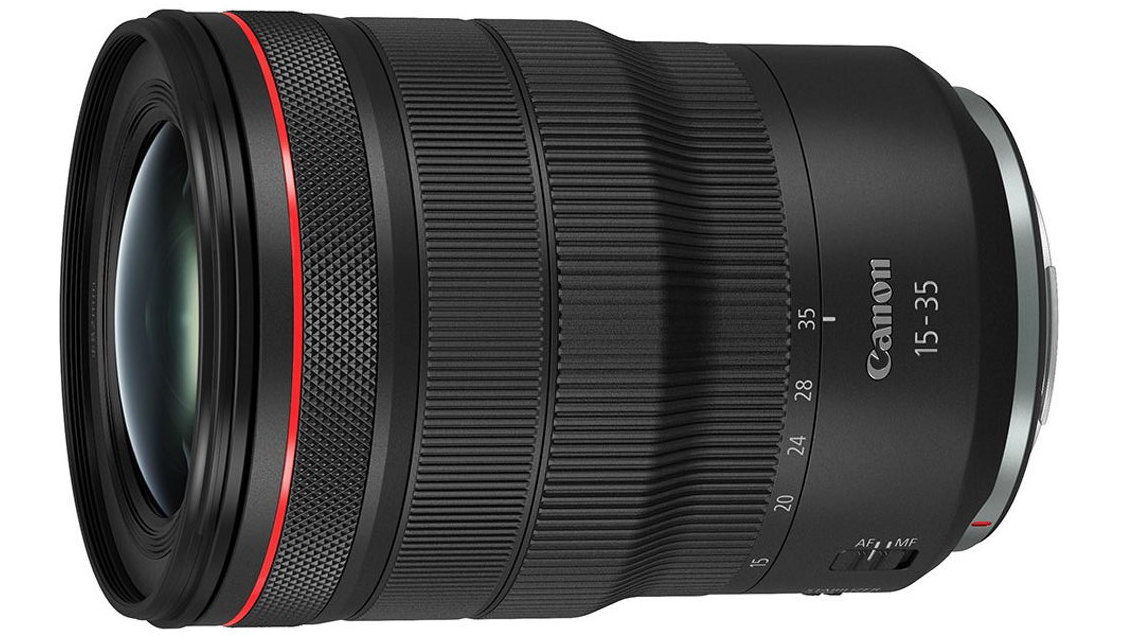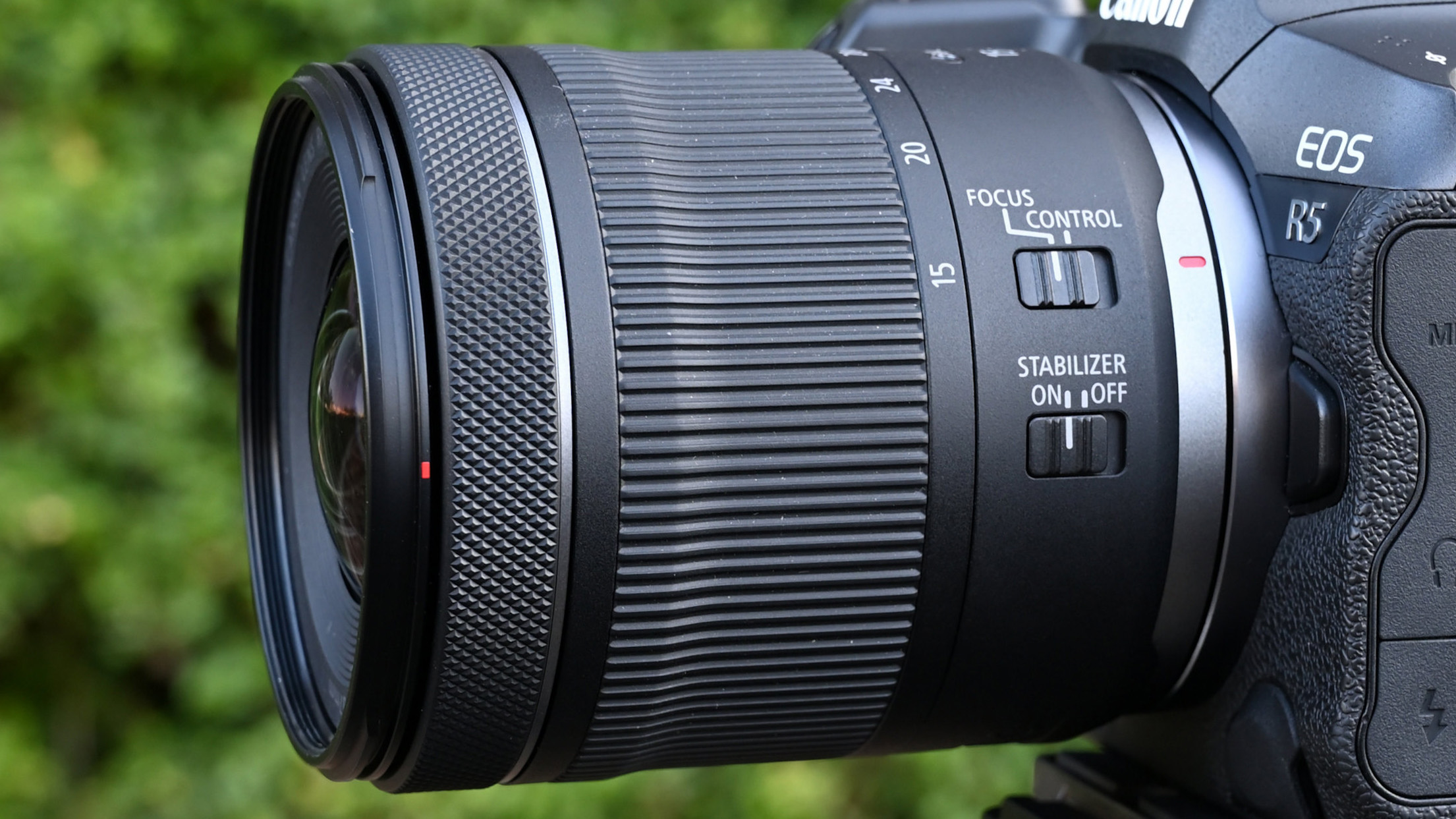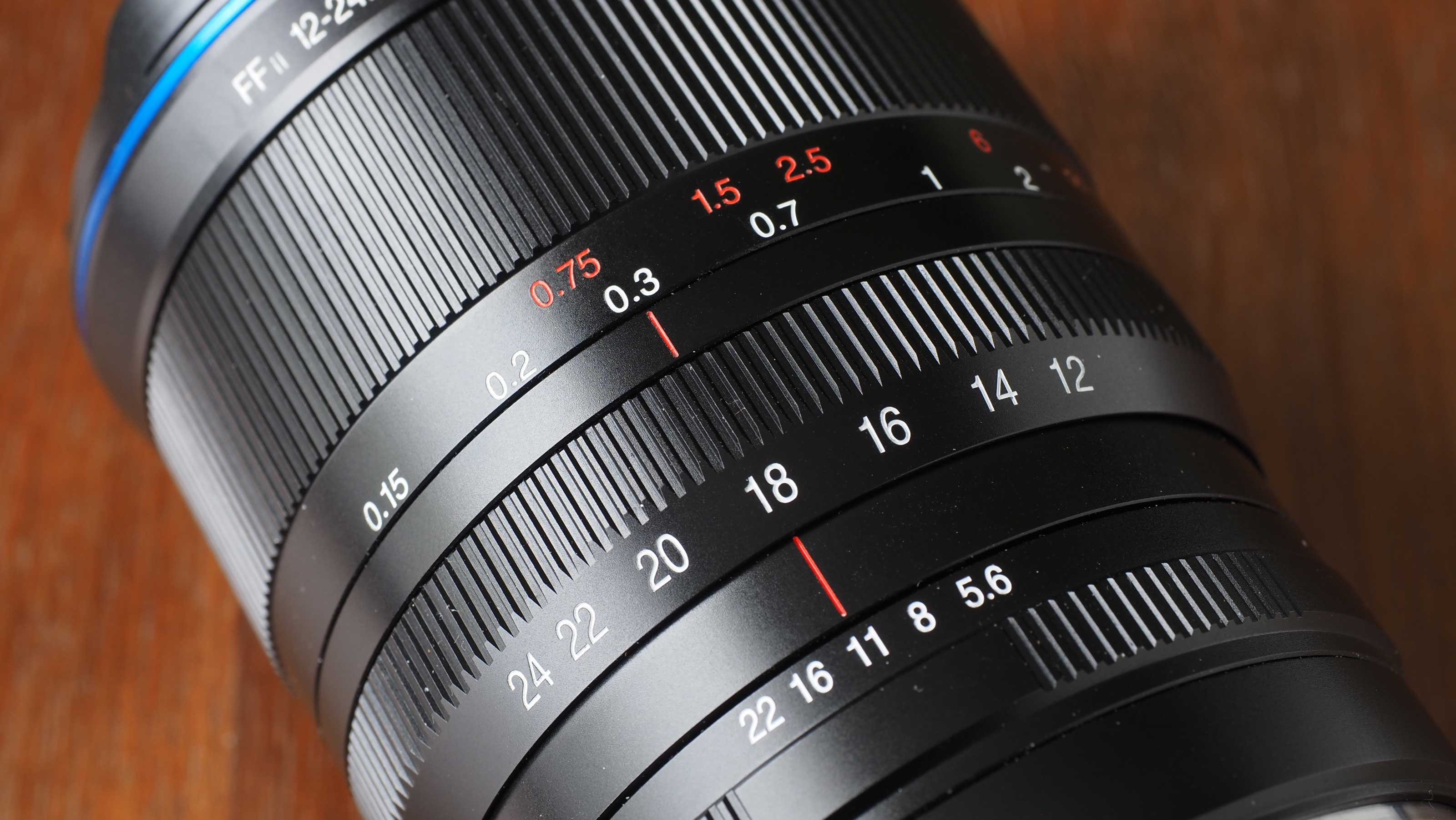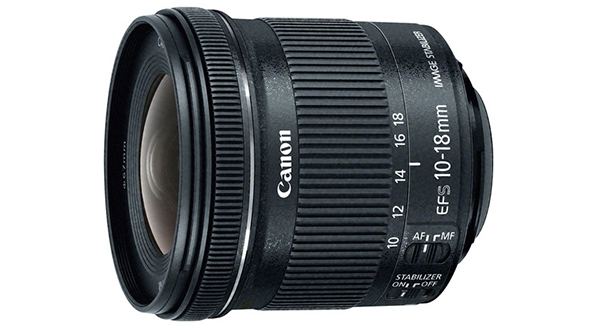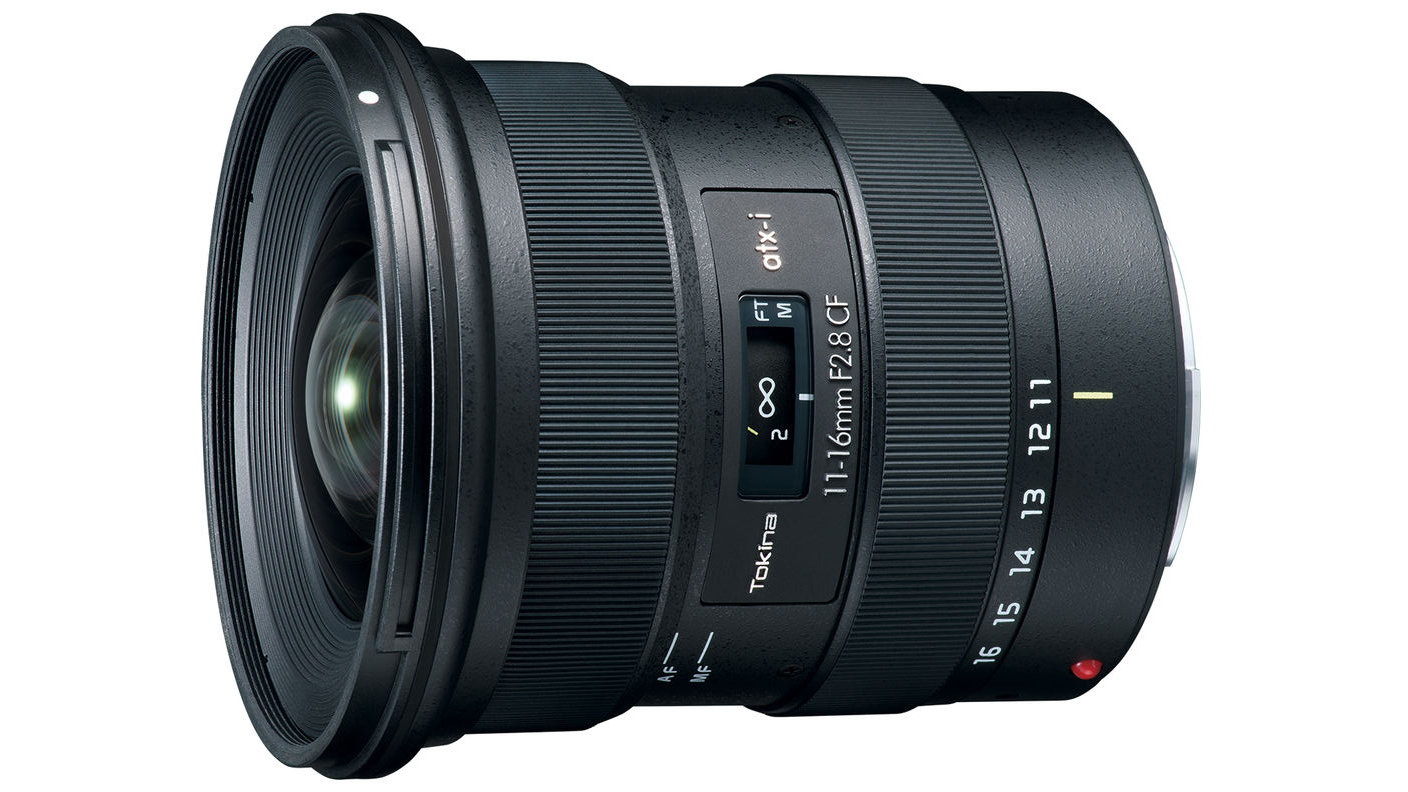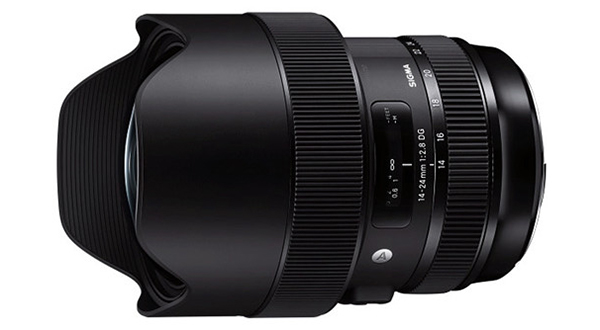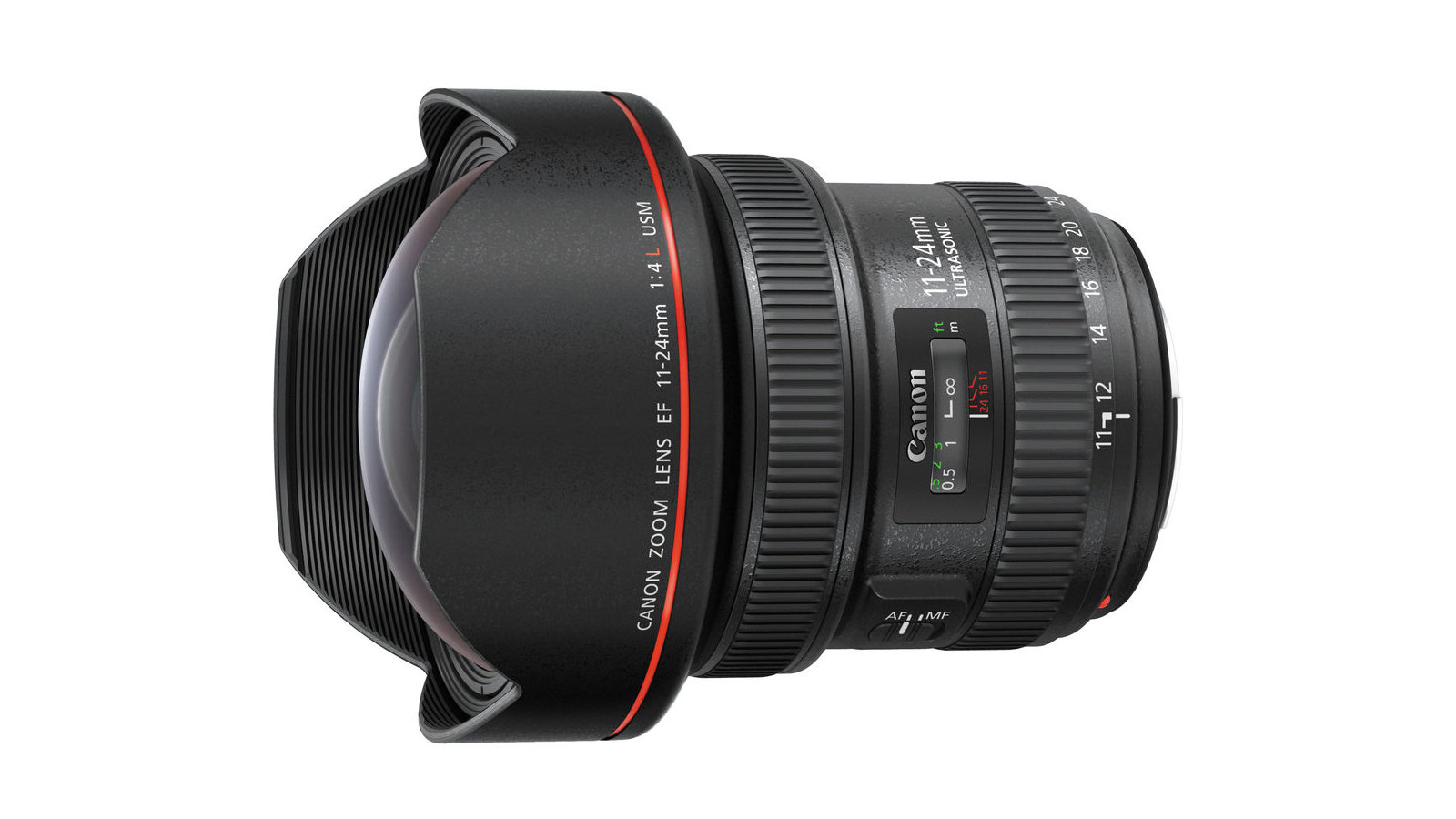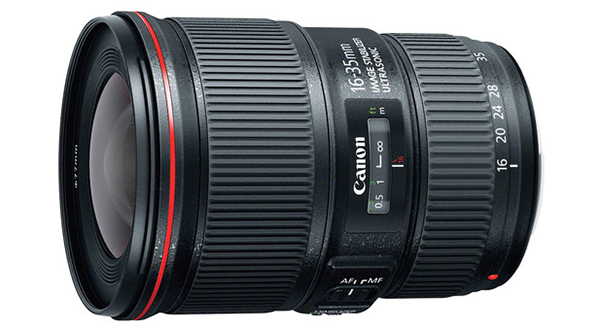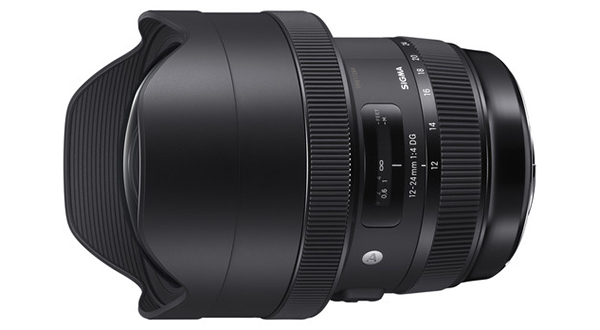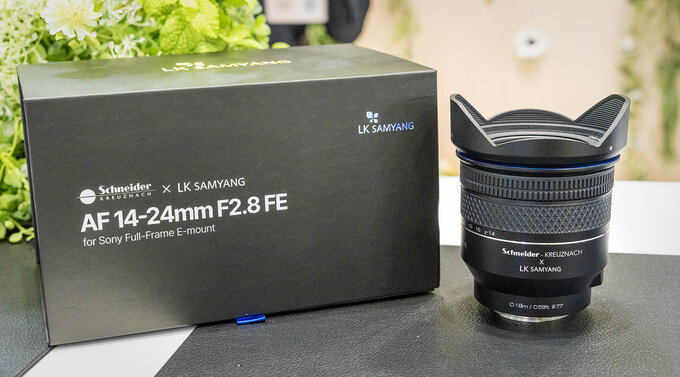The best Canon wide-angle lenses: wide-angle for EOS DSLRs, EOS M and EOS R
Get the best Canon wide-angle lens, whether your camera is mirrorless or a DSLR, APS-C or full frame – we cover them all

In this guide, we're looking at the best Canon wide-angle lenses across all the manufacturer's major mounts. That means options for RF and RF-S mirrorless cameras, EF and EF-S DSLR cameras, and EF-M mirrorless cameras too. There's lots of choice out there – and a hell of a lot of great lenses.
Wide-angle zooms are often used for architecture, landscape and interior photography, and in many cases are also preferred by video shooters and vloggers who want to get plenty into the frame. The wide-angles on this list are some of the best I've tested, and I've made sure to include budget-friendly options as well as premium, professional lenses.
I've put together a quick list of my top choices across the different mounts before getting into the list proper – it's a long list, as my colleagues and I have reviewed a lot of lenses! For more options, you can also see our general guides to the best Canon RF lenses and the best Canon EF lenses.
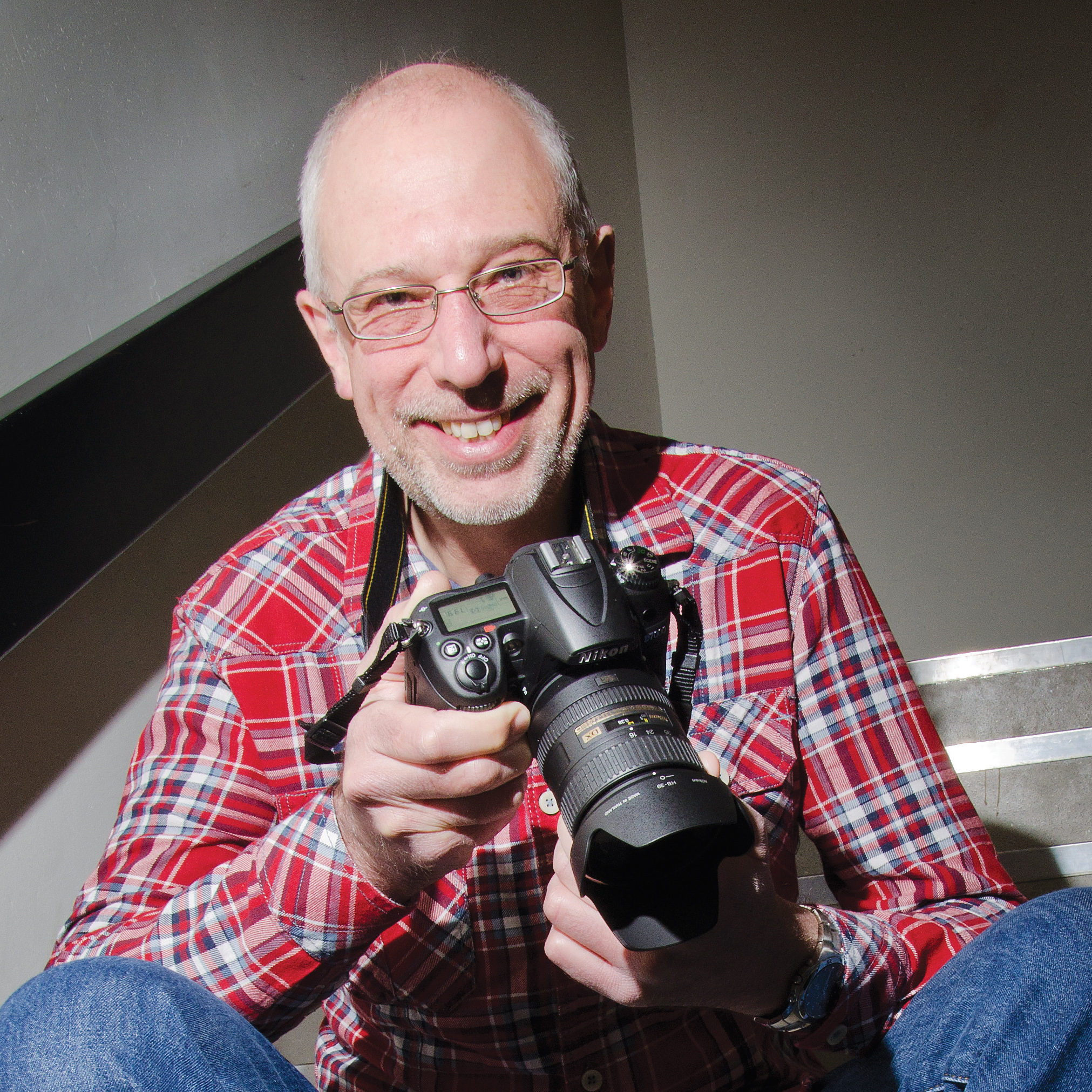
Matthew Richards is Digital Camera World's principal lens reviewer – and he's not easy to impress. A photographer and journalist with many years' experience using and reviewing photo gear, he is ideally placed to recommend the best Canon wide-angles.
The quick list
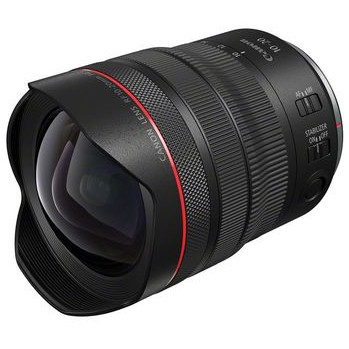
Best RF wide-angle
This rectilinear wide zoom for Canon's RF-mount is a world's first, and delivers brilliant wide-angle imagery in a lightweight, stabilised package.
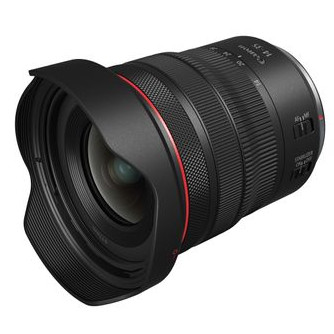
Best affordable RF lens
If the top-flight RF 10-20mm lens is too expensive for you, we love this mid-range wide-angle zoom lens, which received a full five stars in our review.
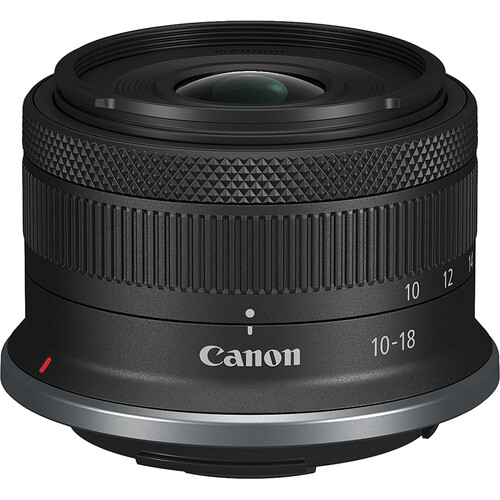
Best RF-S wide-angle
A long-awaited lens, the Canon RF-S brings wide-angle shooting to the APS-C EOS R range. It's a tidy, affordable and portable optic that impressed us in testing.
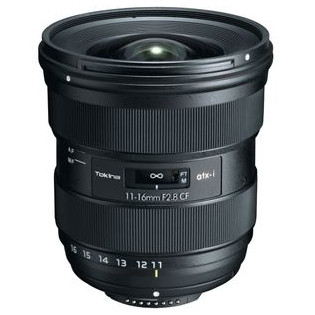
Best wide-angle for EF-S
If you're using an APS-C Canon DSLR, we'd recommend this Tokina lens. The zoom range is comparatively short, but having a constant f/2.8 aperture is a boon.
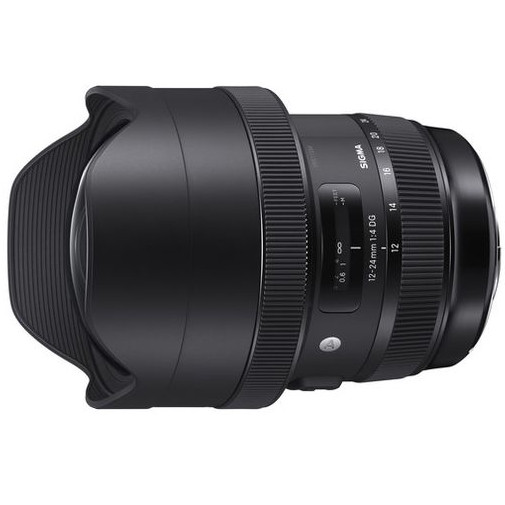
Best Canon EF wide-angle
Providing better value for money than Canon's EF 11-24mm, Sigma's ‘Art’ lens delivers brilliant sharpness and contrast with a constant aperture and wide viewing angle.
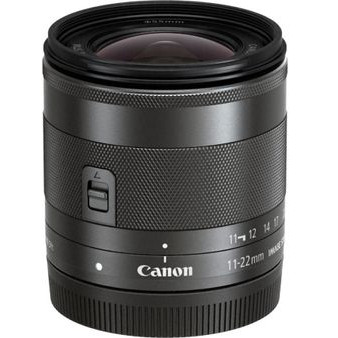
Best EF-M wide-angle
If you're using EOS M mirrorless cameras, this zoom is your best bet for wide-angle shooting – it weighs just 220g, and boasts a close-focus distance of 0.15m.
Best Canon wide-angle lenses
Why you can trust Digital Camera World
Canon RF
Here are the wide-angle zooms for Canon's full-frame mirrorless cameras – the latest flagship lenses and professional optics.
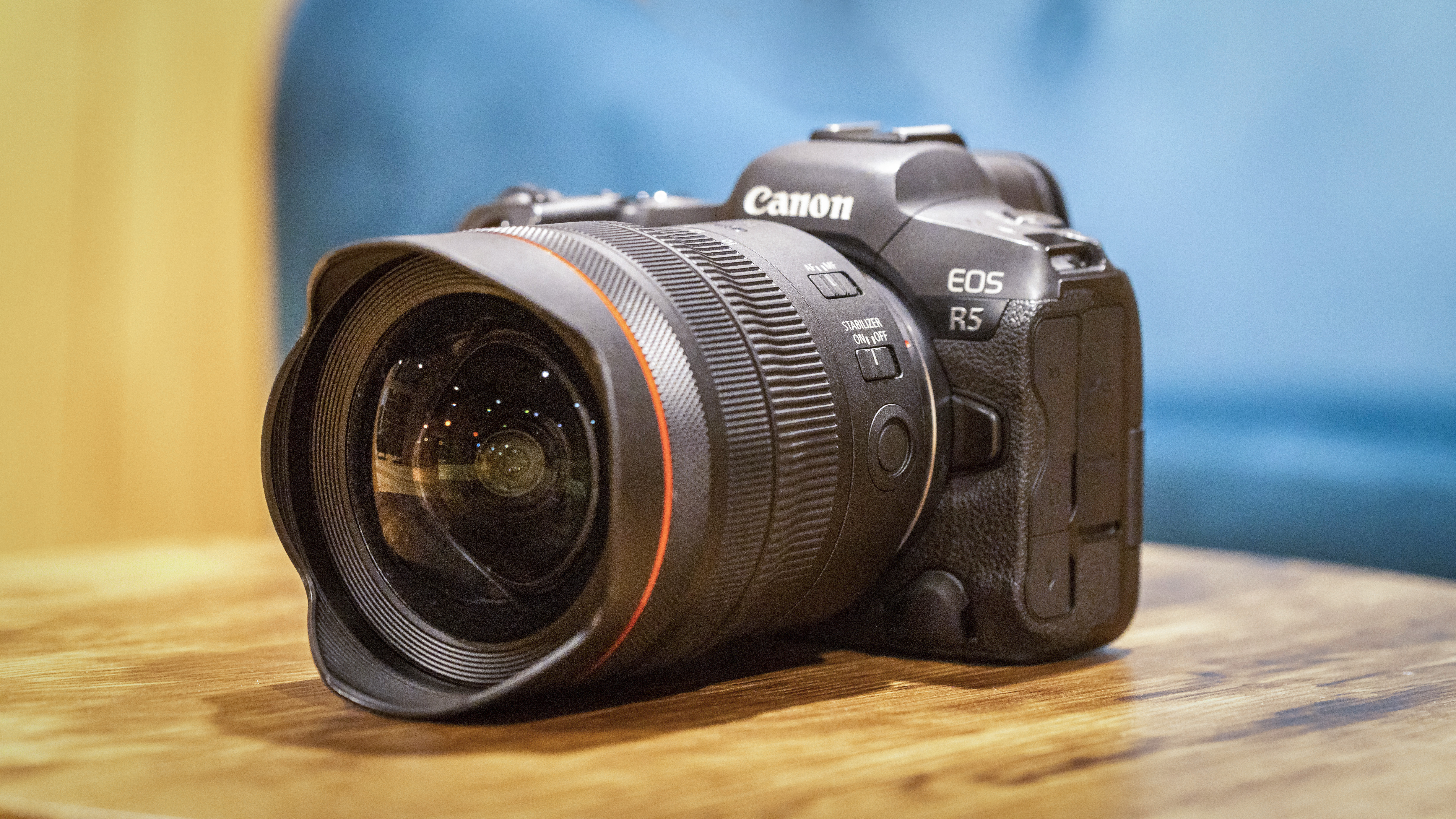
Specifications
Reasons to buy
Reasons to avoid
Canon has taken full advantage of the strengths of the RF mount – chiefly its close proximity between the rear lens element and the sensor – to deliver a lens that's a world first. The RF 10-20mm f/4L IS STM is the widest full-frame rectilinear lens with autofocus, and while yes that is a lot of qualifiers for a record, it's still cool, dammit. The rectilinear design (as opposed to fisheye) means it can keep straight lines straight even in such a wide perspective, making it much more viable for architecture and landscape photography. Also, by cutting the longer end of the zoom down from 24mm to 20mm, Canon manages to make the RF lens both lighter and cheaper than its EF predecessor, which you'll meet further down the page.
Read our full Canon RF 10-20mm f/4L IS STM review.
Specifications
Reasons to buy
Reasons to avoid
This is a big lens that feels less well matched to a slim-line mirrorless camera body, but the Canon lens certainly goes large on features and handling. The main reason for its price and size is that it’s an f/2.8 constant aperture zoom. As usual for a Canon L-series lens, it has tough, weather-sealed build quality of a pro-grade standard. Handling bonuses include a 5-stop optical stabilizer, a customizable control ring, and a detachable hood, which enables the fitment of 82mm filters or filter holders. The image quality is gorgeous, although corner sharpness could be a little better when shooting wide-open at the short end of the zoom range.
Read our full Canon RF 15-35mm f/2.8L IS USM review for more details.
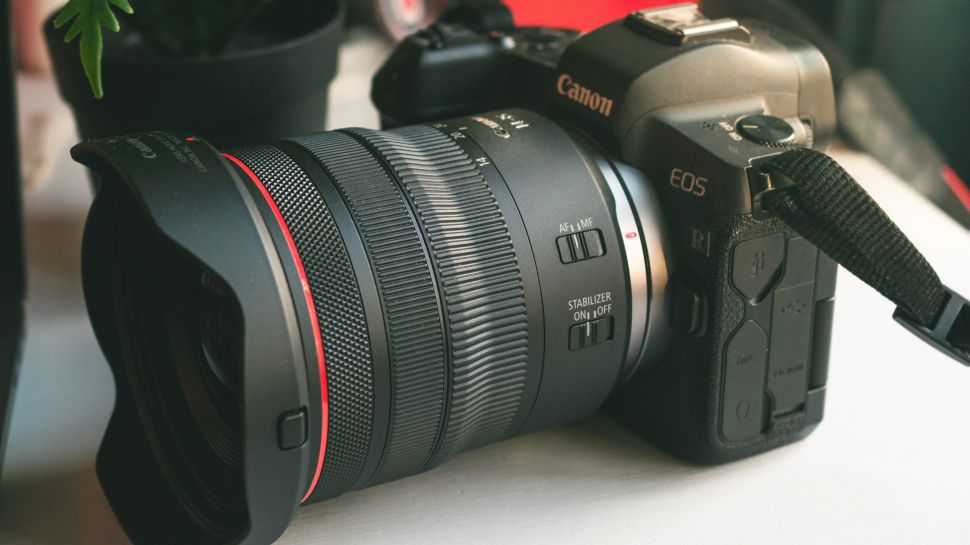
Specifications
Reasons to buy
Reasons to avoid
This might look at first glance like simply a cheap version of the RF 15-35mm f/2.8 lens listed above – but dig in deeper, and Canon's RF 14-35mm f/4L IS USM reveals itself to be quite a bit more than that. For a start, as you may have noticed it's a little wider, and while 14mm might not sound all that different to 15mm, it can count for a lot in terms of your field of view. Then you also have that 0.2m close focusing distance, and an absolutely superb stabilisation system, which delivers up to 7 stops effective compensation when paired with a compatible EOS R body. On testing, we managed to get sharp shots while hand-holding the camera for a full 1sec shutter speed.
Read our full Canon RF 14-35mm f/4L IS USM review.
Specifications
Reasons to buy
Reasons to avoid
The Canon RF 15-30mm F4.5-6.3 IS STM offers up a wide viewing angle for RF users without the hefty cost of Canon's L series glass. There are of course some compromises, with the aperture being quite narrow, which restricts its use in low-light situations.
However, the benefits massively outweigh this with the lens being light and compact, while still offering 5.5-stops of stabilization, which is expanded to 7 stops when used on a compatible body. The lens can also act as a pseudo-macro lens, with 0.52x magnification at 15mm, opening up new creative opportunities. And with Canon's quiet and fast STM motor, this lens is perfect for vlogging and video making.
Read our full Canon RF 15-30mm F4.5-6.3 IS STM review for more details.
Specifications
Reasons to buy
Reasons to avoid
There aren't a lot of budget options for RF users (yet), so if you're looking for a relatively low-cost lens, this manual-focus optic from Laowa is worth a look. The Laowa 12-24mm f/5.6 has no image stabilizer, or any ability to communicate with a camera at all (its 'dumb' design means you're on your own), but it does provide an effective wide-angle perspective at a much cheaper price than Canon's own-brand RF lenses. Also, its moderately convex front element means you should be able to attach regular filters, which is not exactly common for wide-angle zooms.
In our review, we found the Laowa 12-24mm f/5.6 to be optically somewhat lacking. It does well at the widest settings, producing images that are crisp and clear, but when we zoomed in to 24mm, we noticed a distinct lack of sharpness. The f/5.6 maximum aperture can be a little restricting too. As long as you are aware going in that you're not going to get the crystal-clear sharpness of a lens with a four-figure price tag, this is a solid budget choice.
Read our full Laowa 12-24mm f/5.6 review for more details.
Canon RF-S
There historically haven't been many lenses designed specifically for Canon's RF-S mount for APS-C cameras (remember that these cameras can still use full-frame RF lenses). However, this is changing thanks to Canon finally opening up the RF mount to third-party manufacturers. This means that RF-S shooters have the option of a Sigma-made wide-angle zoom, as well as Canon's own lens for the smaller mount.
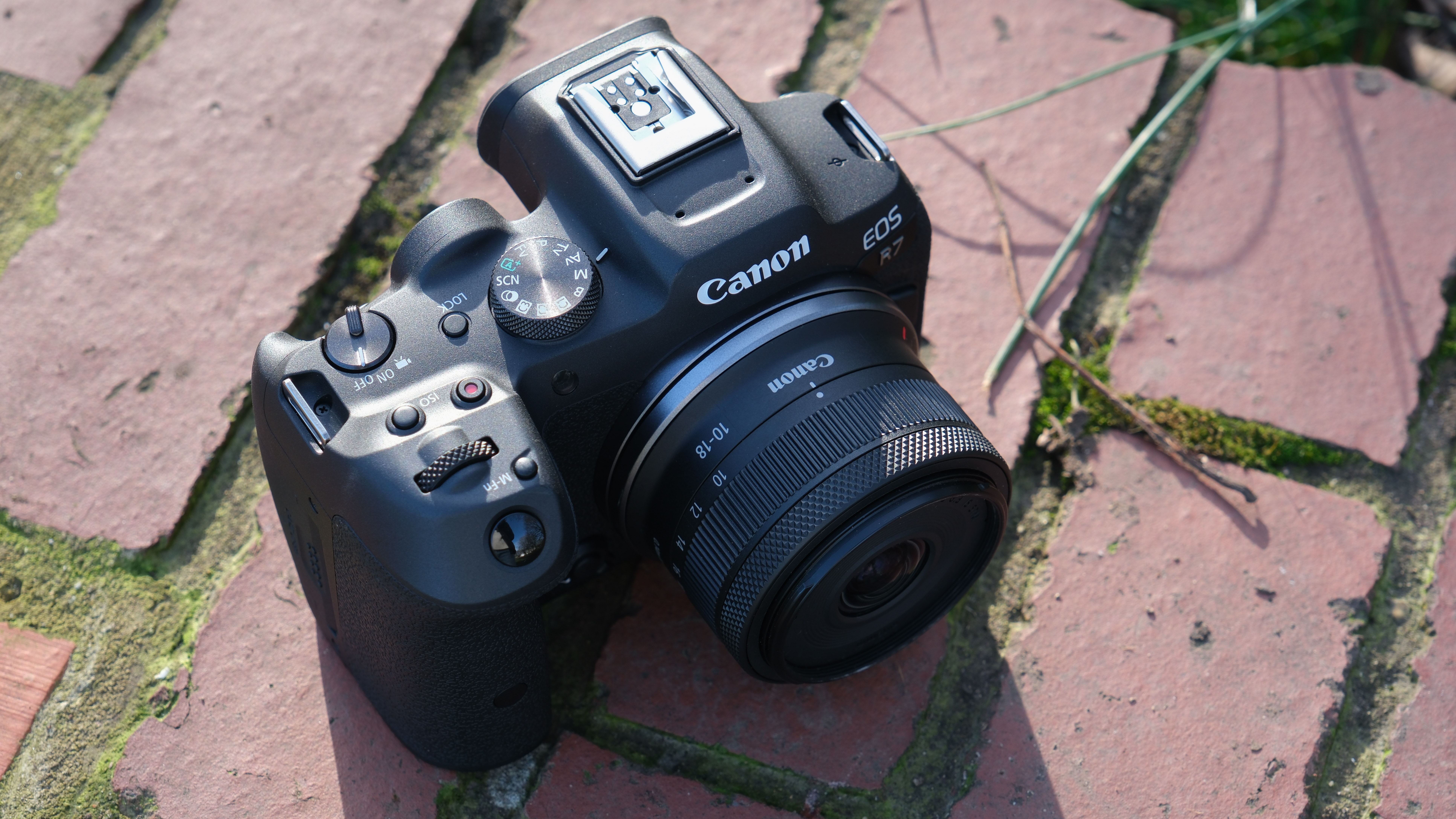
Specifications
Reasons to buy
Reasons to avoid
We were waiting a while for Canon to get around to releasing a decent wide zoom for its APS-C mirrorless cameras – and happily, this one is more than decent. In fact, the RF-S 10-18mm f/4.5-6.3 IS STM is really rather good, with consistently good image quality, fast focusing and effective stabilisation – more of a necessity on the APS-C cameras, which tend not to have in-body stabilisation systems. Indeed, we found little to complain about in our test of the lens. It'll create a fair amount of distortion if left uncorrected, though the fairly simply solution here is to simply not leave it uncorrected. Otherwise? This is a solid wide-angle zoom for APS-C EOS R cameras.
Read our full Canon RF-S 10-18mm f/4.5-6.3 IS STM review.
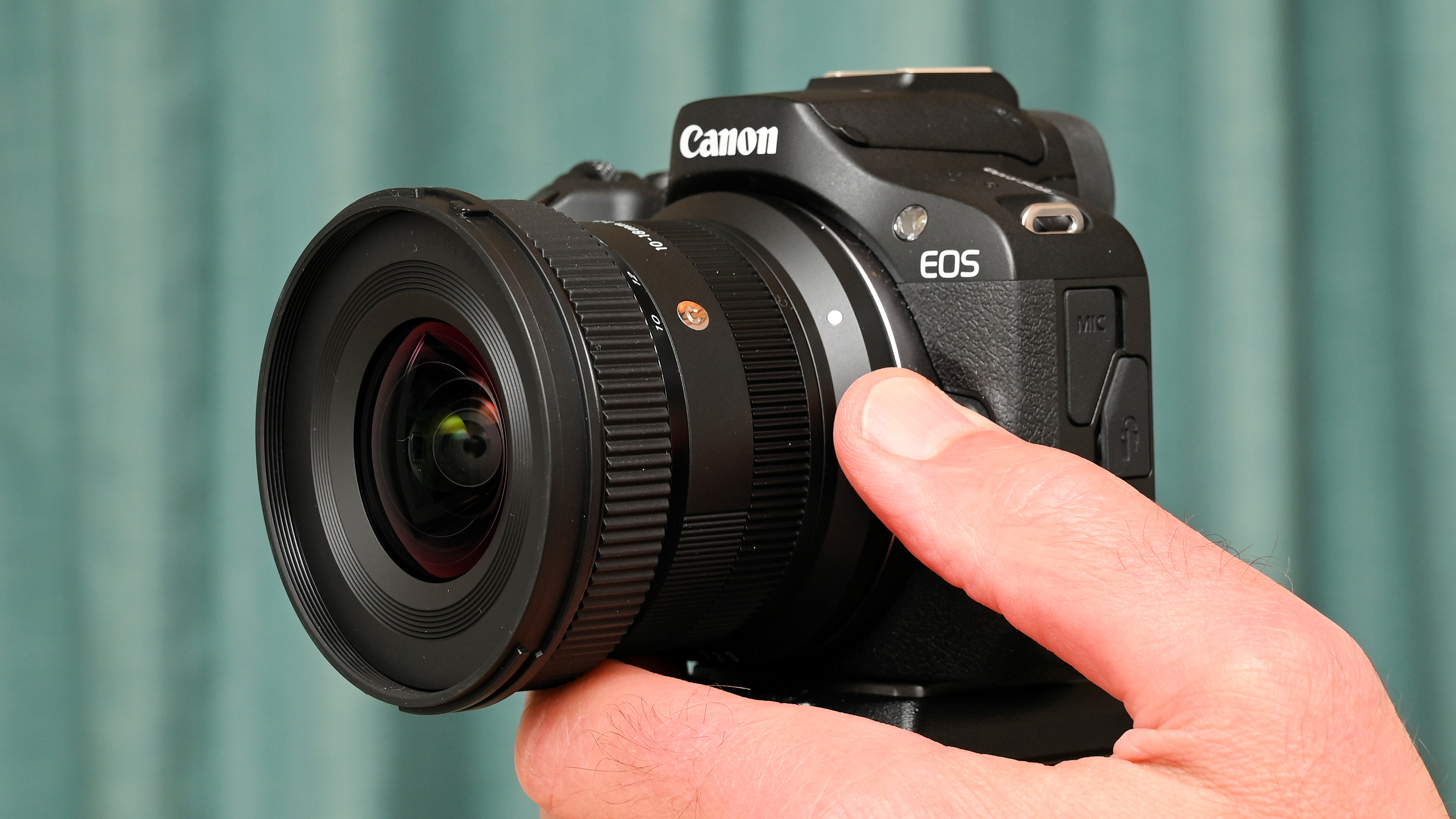
Specifications
Reasons to buy
Reasons to avoid
A third-party wide-angle zoom for RF-S mount – with autofocus, no less – the Sigma 10-18mm F2.8 DC DN C is a welcome sight indeed. Offering the same focal range as Canon's own RF-S zoom, the Sigma version distinguishes itself with a faster constant f/2.8 aperture. This means off the bat that it's both heavier and more expensive than Canon's 10-18mm lens, with the trade-off of better low-light performance. Sigma also doesn't share Canon's ultra-stingy habit of making you pay extra for a lens hood, so that's nice.
The choice between this and Canon's cheaper 10-18mm RF-S lens is a complicated one. The optical stabilisation on the own-brand lens really is a boon in a number of shooting situations, even on a format as wide as this, and I also like the fact that Canon's lens puts in a decent macro performance with 0.5x magnification, letting you switch to manual focusing and get in super-close. However, Sigma's lens wins out in sheer quality terms, and having an f/2.8 aperture at this price is nothing to sneeze at.
Read our full Sigma 10-18mm F2.8 DC DN C review
Canon EF-S
If you're using a Canon DSLR with an APS-C sensor, here are some wide-angle zooms worth taking a look at.
Specifications
Reasons to buy
Reasons to avoid
We prefer this new Canon STM lens to the veteran EF-S 10-22mm, and not just because it’s only about a third of the price. The 10-18mm is wonderfully compact and lightweight for a wide-angle zoom – it’s actually less than half the weight of the competing Sigma APS-C format lenses, so ideally suited to travel photography. The weight saving is partly due to the mounting plate being made from plastic rather than metal, but the lens still feels reasonably robust. The STM (Stepping Motor) autofocus system is fast for stills and ideal for video capture, delivering smooth focus transitions and being virtually silent in operation. Another advantage over the Canon 10-22mm is that this lens adds image stabilization, which is great for indoor or twilight shooting.
Read our full Canon EF-S 10-18mm f/4.5-5.6 IS STM review for more details.
Specifications
Reasons to buy
Reasons to avoid
Tokina’s first ATX 11-16mm was something of a trailblazer, bringing ultra-wide viewing to APS-C format Canon DSLRs, coupled with a fast and constant f/2.8 aperture. It came with a solid construction, typical of Tokina’s high standards of build quality. The Mark II edition of the Canon-mount lens had minimal changes to the multi-coatings, but the latest ‘atx-i’ edition looks and feels rather different. The ‘i’ stands for ‘interactive’ mutual communication between photographer and lens. It certainly looks more modern but retains Tokina’s usual ‘One-touch Focus Clutch’ mechanism. This gives you the option of switching between autofocus and manual focus modes simply by clicking the focus ring forwards or backwards. It works well on the whole, but you have to be careful not to nudge the focus ring accidentally. As with the previous editions, image quality is very good in all respects, although the overall zoom range is pretty modest.
Read our full Tokina atx-i 11-16mm f/2.8 CF review for more details.
Canon EF
Users of full-frame Canon DSLRs have no shortage of options when it comes to wide-angle zooms. Here are some that have particularly impressed our review team.
Specifications
Reasons to buy
Reasons to avoid
Sigma has really gone to town with wide-angle zooms in its Global Vision lineup, but this lens is the latest and greatest. It has a slightly more modest maximum viewing angle than the 12-24mm Art lens below, but a faster aperture rating; both are practically identical in size and weight. High-tech glass includes an ultra-high-precision moulded glass aspherical front element, combined with three FLD (Fluorite-grade Low Dispersion) and three SLD (Special Low Dispersion) elements.
The lens is immaculately engineered and has a full set of weather seals instead of just a sealed mount. A fluorine coating is applied to repel muck and moisture, while the built-in lens hood gives physical protection to the protruding front element, as well as helping to reduce ghosting and flare. Sharpness and contrast are very impressive even when shooting wide-open at f/2.8, and this lens is virtually distortion-free. Colour fringing is also negligible, even around high-contrast edges towards the extreme corners of the frame. It’s an absolutely stellar lens in every respect.
Read our full Sigma 14-24mm f/2.8 DG HSM | A review for more details.
Specifications
Reasons to buy
Reasons to avoid
This lens from Canon is a rectilinear rather than a fisheye lens, which means that it controls distortion to make lines within photos straight, rather than that curved effect. This full-frame compatible zoom takes viewing angles to the extreme, no Canon first-party lens gives you a wider field of view.
The price tag is significant, but Canon’s EF 11-24mm is something of an engineering feat and has impeccable build quality, along with excellent all-around performance. At the end of the day though, the competing Sigma 12-24mm f/4L DG HSM almost matches the Canon for viewing width, delivers superb image quality, and only costs about half as much to buy, making the Canon look relatively poor value.
Read our full Canon EF 11-24mm f/4L USM review for more details.
Specifications
Reasons to buy
Reasons to avoid
If money’s no object, the Canon EF 16-35mm f/2.8L III USM is an f/stop faster than this lens, and a darling of the most demanding pro photographers; however, it’s bigger, heavier, lacks image stabilization, and costs twice the price. For an own-brand Canon wide-angle zoom for full-frame cameras, this lens is our favorite. It’s relatively compact and lightweight, has a highly effective 4-stop image stabilizer, and maintains a very high standard of build quality and performance throughout. Like most L-series lenses, it’s robust and weather-sealed, with excellent handling.
Optical highlights include two UD (Ultra-low Dispersion) elements and Super Spectra coating. Fluorine coatings are also applied to the front and rear elements. Centre-sharpness is spectacular, although it drops off a little more towards the extreme edges and corners of the frame. Color fringing is controlled particularly well, and there’s fairly little barrel and pincushion distortion at the short and long ends of the zoom range respectively.
Read our full Canon EF 16-35mm f/4L IS USM review for more details.
Specifications
Reasons to buy
Reasons to avoid
The upgraded ‘Art’ edition of Sigma’s 12-24mm lens goes head-to-head with the Canon EF 11-24mm f/4L USM, but only costs about half the price. It has a constant-aperture design, generally preferred by enthusiasts and professional photographers, and the optical path incorporates an extra-large-diameter aspherical element and five premium FLD (Fluorite-grade Low Dispersion) elements. Fluorine coatings are applied to the front and rear elements, and the mounting plate is weather-sealed. The uprated ring-type ultrasonic autofocus system is faster than before, though this Art lens is rather bigger and heavier than the older edition. Sharpness and contrast are excellent, and sharpness doesn’t drop off too much even at the extreme corners of the frame, despite the ultra-wide maximum viewing angle. Overall, it’s the best-buy zoom on the market for full-frame DSLRs, if you want maximum viewing width.
Read our full Sigma 12-24mm f/4 DG HSM | A review for more details.
Canon EF-M
Canon's EOS M line may not be getting much love from the manufacturer itself, but these APS-C mirrorless cameras remain popular. Here is our wide-angle recommendation for the system.
13. Canon EF-M 11-22mm f/4-5.6 IS STM
Specifications
Reasons to buy
Reasons to avoid
Think ultra-wide-angle zooms and you’re probably thinking of big, hefty lenses that are expensive to buy. This lens for EOS M-series mirrorless cameras is the polar opposite. Just a couple of inches long and weighing in at just 220g, it’s extremely compact and lightweight, with a retractable design and a 55mm filter thread.
With an ‘effective’ zoom range of 17.6-35.2mm in full-frame terms, it has a generous maximum viewing angle, along with an impressively short minimum focus distance of 0.15m. This enables you to get in really close and create exaggerated perspective effects. The lens boasts 3-stop optical image stabilization but, while build quality feels very good, it’s not weather-sealed and the petal-shaped hood is sold separately.
How to choose a Canon wide-angle lens
When picking a wide-angle lens, it's important to think about what kind of photography you want to use it for – and these lenses have quite a few application. A wide-angle can be great for travel photography, for instance, allowing you to accentuate the drama and scale of tall landmarks or dazzling interiors. They can be used to great creative effect, letting you recede the backdrop of an image and dramatically separate the main subject in the foreground. Short focal lengths also introduce a large depth of field, which lets you keep the whole image plane as sharp as possible.
Our guide includes the best wide-angle zooms across all Canon's systems. Naturally, DSLR users with the EF and EF-S lens mounts will have the most choice, as the ranges for EOS M and RF mirrorless cameras are a lot less expansive. Also, users of EOS M, APS-C DSLRs (EF-S) or APS-C RF mirrorless cameras (RF-S) should be aware that the crop factor will affect the perspective of the lens, and if you use a full-frame wide-angle lens on an APS-C camera, you'll lose some of the effect; a 17-40mm full-frame EF lens will behave like a 27-64mm lens on an APS-C camera.
How we test lenses
We test lenses using both real world sample images and lab tests. Our lab tests are carried out scientifically in controlled conditions using the Imatest testing suite, which consists of custom charts and analysis software that measures resolution in line widths/picture height, a measurement widely used in lens and camera testing. We find the combination of lab and real-word testing works best, as each reveals different qualities and characteristics.
FAQs
Can I use Canon EF lenses on RF cameras?
Yes – as long as you have an EF-EOS R adapter. This accessory allows EF-mount DSLR lenses to be mounted to EOS R mirrorless camera, in most cases with full functionality of electronic features like stabilisation and autofocus. DSLR lenses can also be mounted to EOS M mirrorless with the EF-EOS M adapter.
This process does not work the other way around however, nor does it work between mirrorless systems – you cannot adapt EF-M lenses to work on EOS R, nor vice versa.
What is a good budget wide-angle lens for Canon RF-mount?
Budget RF lenses aren't exactly commonplace (yet). However, if you don't mind a 'dumb' lens that can't communicate electronically with the camera, Laowa's 12-24mm f/5.6 lens is a good budget option for the system. Until Canon is a bit more open with letting third-party manufacturers develop for its RF-mount, this situation is not likely to change much.
The best camera deals, reviews, product advice, and unmissable photography news, direct to your inbox!
Matthew Richards is a photographer and journalist who has spent years using and reviewing all manner of photo gear. He is Digital Camera World's principal lens reviewer – and has tested more primes and zooms than most people have had hot dinners!
His expertise with equipment doesn’t end there, though. He is also an encyclopedia when it comes to all manner of cameras, camera holsters and bags, flashguns, tripods and heads, printers, papers and inks, and just about anything imaging-related.
In an earlier life he was a broadcast engineer at the BBC, as well as a former editor of PC Guide.
